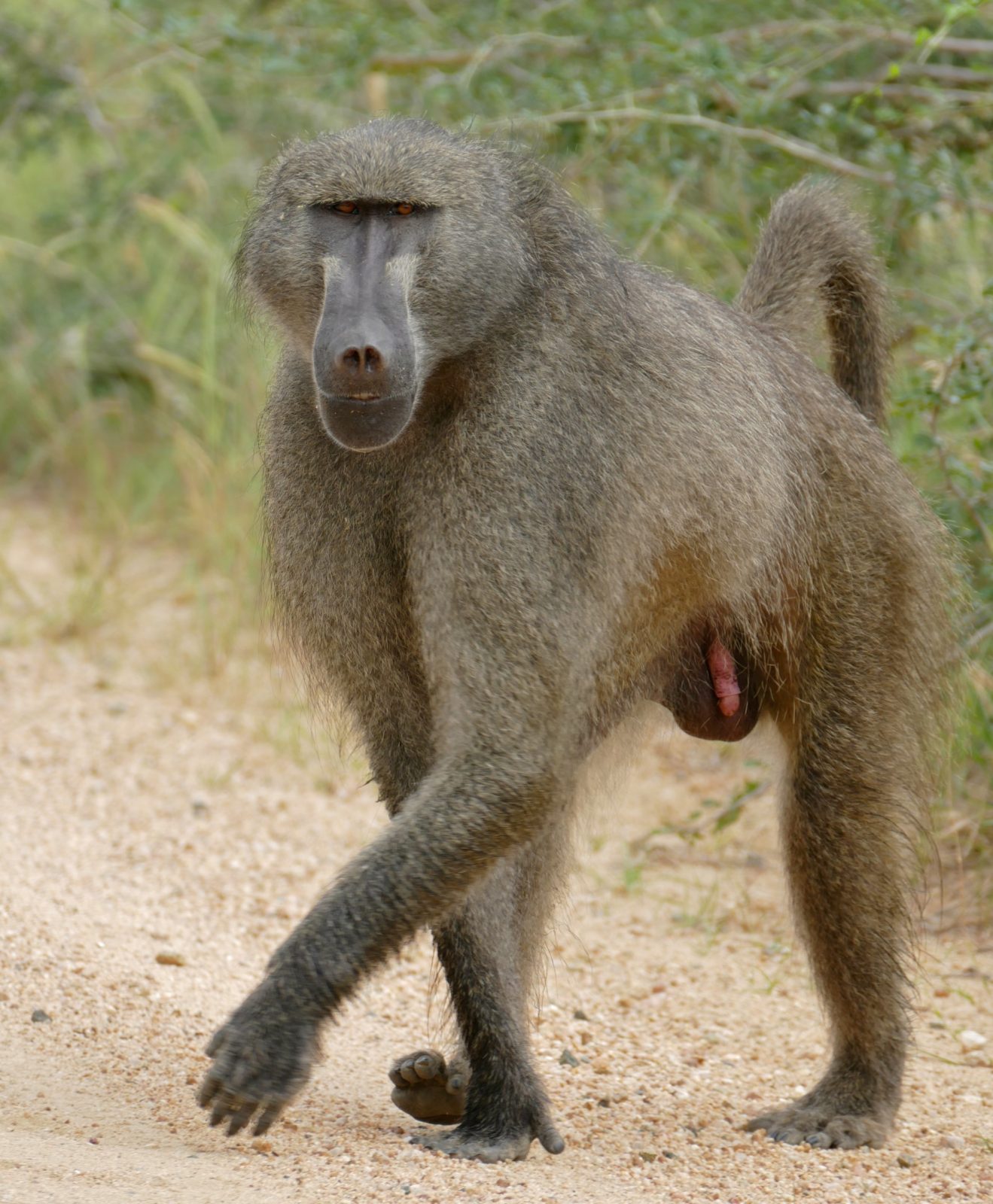
Chacma baboon
One of the largest old world monkeys, the Chacma baboon is found throughout the southern part of the African continent.
They are considered as least concerm, and are a species which is quite happy without it rainforest home. Instead you find it out on the Savannah plains. It is true that young will race up a tree if it is handy, to get away from danger, but for the most part, these monkeys can hold their own against even big cats. Large males have huge incisors, and this can be used to kill animals like leopards.
What is amazing, is that this primate is capable of living in many different habitats, including urban ones. Indeed, the baboons of Cape town are often a nuisance.
There are 2 (or 3 though the third is not accepted by many people) subspecies
- Papio ursinus ursinus Kerr, 1792 – Cape chacma (found in southern South Africa)
- P. ursinus griseipes Pocock, 1911 – Gray-footed chacma (found in northern South Africa to southern Zambia)
- P. ursinus raucana Shortridge, 1942 – Ruacana chacma (found from Namibia to southern Angola, but not accepted by all authorities as distinct.
The chacma baboon is an omnivorous, eating almost anything it can find. More common foods include fruits, seeds, grass, blossoms, bulbs, bark, insects, spiders, worms, grubs, rodents, birds, small antelope and fungi (the desert truffle Kalaharituber pfeilii). Despite this impressive list, meat is a relatively small proportion of their diet (about 2%) with the rest coming from a variety of plant matter. Unfortunately, for a forager, farmland is an easy place to find things to eat, and as such many farmers hate the baboons, and will kill on occasions. Around the cape, and along the coast, shellfish and other small marine invertebrates, are taken, often with significant frequency. It is generally a scavenger when it comes to game meat, and rarely engages in hunting larger animals (though it is clearly capable).
There has been an incident of baboons hunting and killing a human child, however this is incredibly rare (locals put it down to witchcraft). Normally, wild chacma baboons will flee at the approach of humans, though this is changing due to the easy availability of food and garbage from human dwellings in villages and towns near the baboons’ habitat.
They are also hunted by a variety of predators, though large males can often push off predators, as they are themselves considerably dangerous.
Troops generally consist of 5-10 males with a large group of females and their young.
Generally choosing to sleep on steep cliffs or similarly dangerous places to deter predation.
Young, who loose their mother are usually adopted by another female.
While the species is at no risk of extinction at the current time, it is constantly at risk of being pushed out of certain areas. It is listed under Appendix 2 of CITES.
